Camping, as a leisure travel activity, has seen a strong momentum in recent years. Especially in North America, according to the 2023 North American Camping & Outdoor Hospitality Report released by KOA, camping activities accounted for 32% of all leisure travel for the year.
Against this backdrop, off-grid camping has emerged as a rapidly growing trend. Off-grid camping refers to camping in natural settings without connections to main electric grids and water supplies, aiming to provide travelers with a deeper nature experience through a more self-sufficient approach.
This article aims to provide essential information and knowledge about off grid camping, designed to assist campers of various experience levels to engage in off-grid camping safely and enjoyably in natural environments.
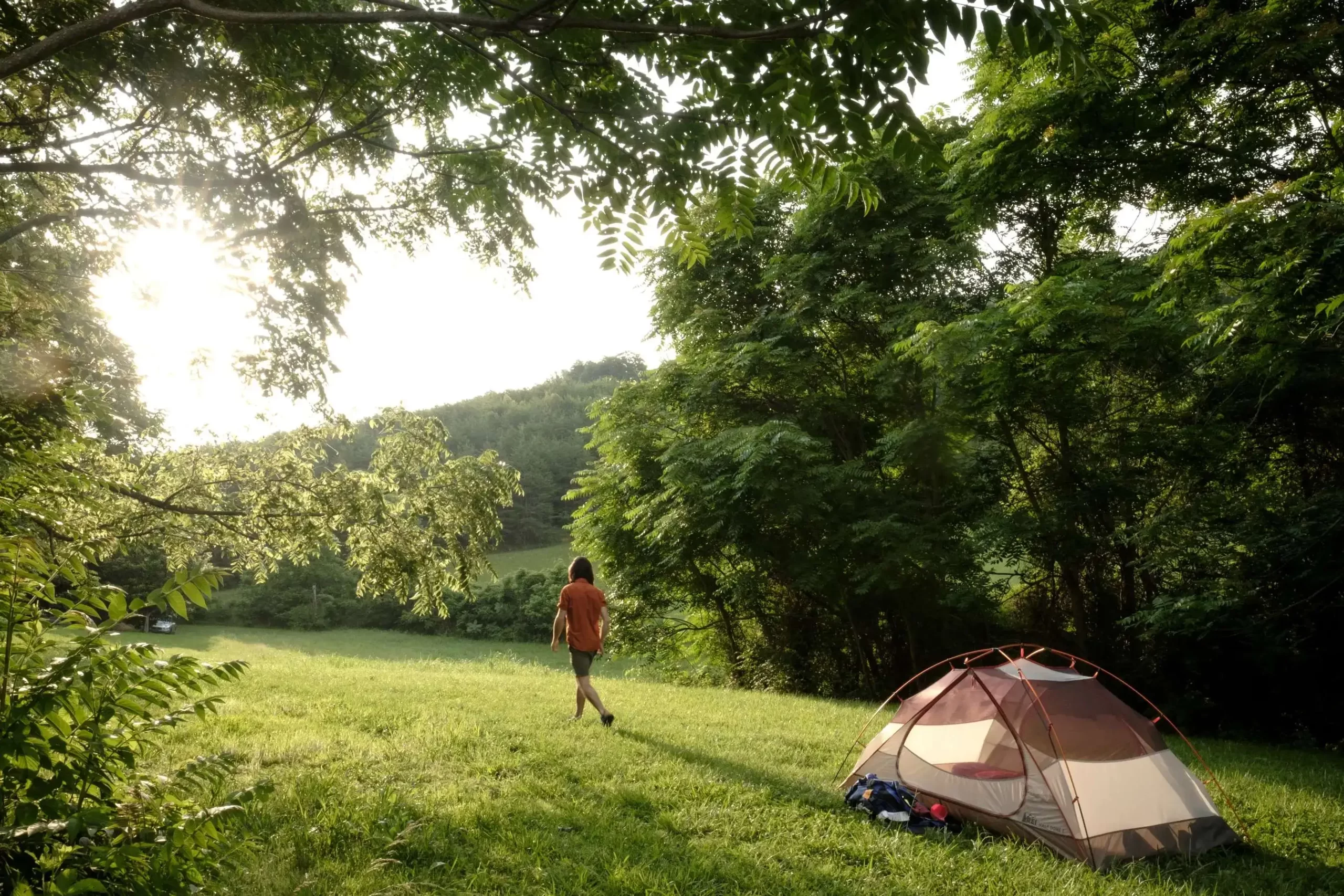
Off-Grid Camping: Types, Pros & Cons
Take a break from the daily hustle and bustle and enjoy time outdoors while relaxing away from the grid.
There are a variety of off-grid camping options available, and you can choose from a variety of camping experiences based on your personal preferences. We will present you with several types of off-grid camping, their respective advantages and challenges, and how to adequately prepare to enjoy these unique experiences:
Boondocking
Definition: Camping on public lands without access to public facilities.
Pros:
- Free or very inexpensive, allowing for privacy and a unique natural experience.
- Fewer crowds mean more peace, enabling a fuller experience of nature.
- Increased chances of wildlife encounters and pet-friendly environments.
Cons:
- High self-sufficiency is required due to the lack of hookups.
- Potentially remote locations may necessitate longer travel times.
- Adverse road and weather conditions could impact access.
How to Do It:
- Verify the area’s regulations for boondocking permissions.
- Prepare adequate food and water supplies.
- Utilize apps to find ideal spots.
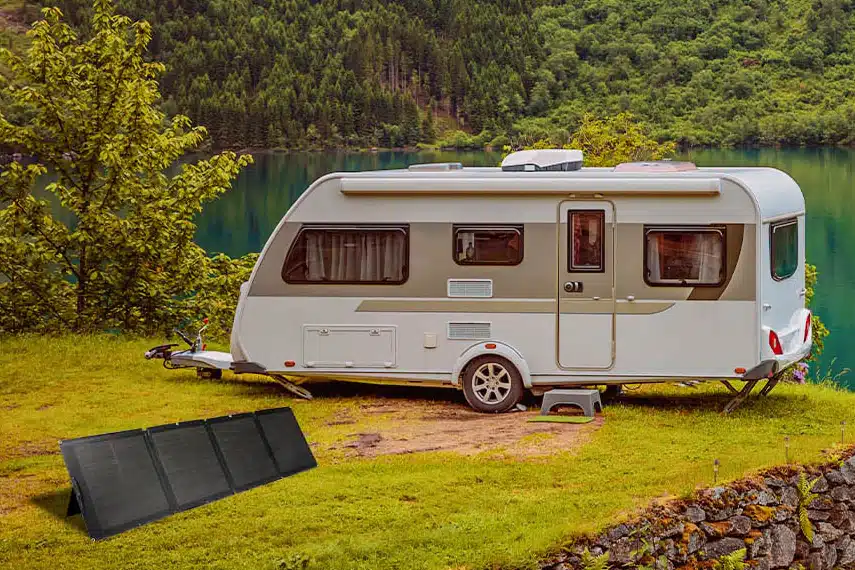
Primitive Camping
Definition: Camping in designated areas without basic infrastructure like water and electricity.
Pros:
- Offers a deep dive into nature, enhancing survival skills.
- Generally located in more remote and budget-friendly areas.
Cons:
- Basic conditions without amenities may pose challenges.
- Self-sufficiency is crucial for a successful experience.
Where to Do It:
- Some campgrounds and RV parks offer both hookups and primitive sites.
- National and state parks are popular for primitive camping, providing designated areas to connect with the outdoors.
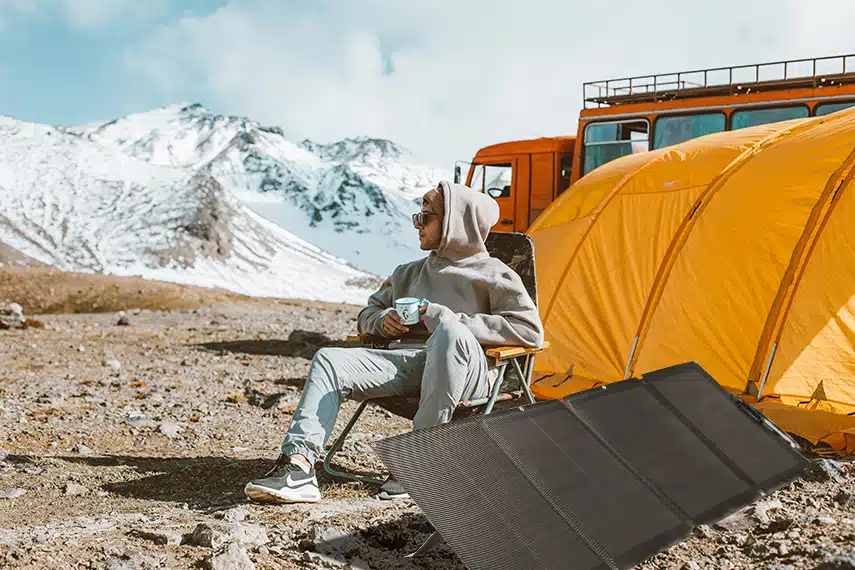
Dry Camping
Definition: Camping without hookups for water, electricity, or sewer, relying on personal resources.
Pros:
- Ideal for campers with self-contained equipment, offering freedom.
- Encourages efficient use of resources and planning.
Cons:
- Requires thorough preparation to avoid shortages of essentials.
- Suitable planning for water and power needs is essential.
How to Do It:
- Plan your water usage carefully.
- Bring sufficient food, supplies, and power sources like solar panels or generators.
- Maintain respect for nature and fellow campers by minimizing noise and leaving no trace.
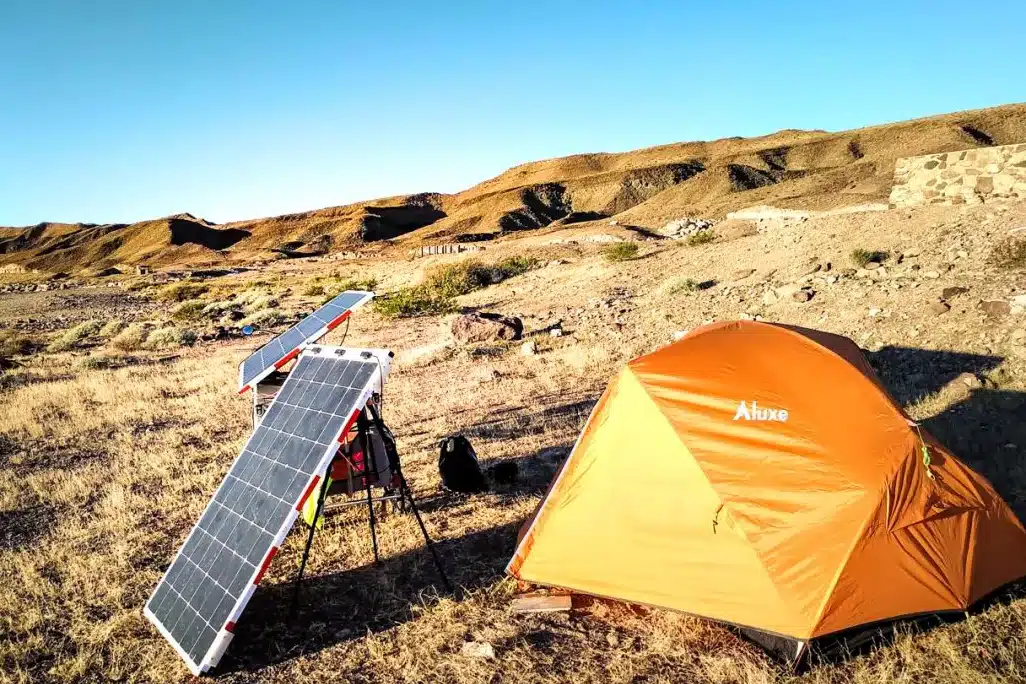
Wet Camping
Definition: Wet camping refers to camping near a water source, such as lakes, rivers, or streams, where water is readily available but may still require purification before use.
Pros:
- Easy access to water for drinking (after purification), cooking, and cleaning, making it convenient for longer stays.
- Enhanced scenic beauty and recreational opportunities, such as fishing, swimming, and boating, directly contributing to a richer camping experience.
- Typically cooler locations due to proximity to water, provide relief during hotter months.
Cons:
- Increased risk of attracting wildlife, requiring careful food storage and waste management.
- Potential for higher humidity levels, which can affect comfort and increase the likelihood of insect-related nuisances.
- Access to water may necessitate more stringent Leave No Trace practices to protect water quality and surrounding environments.
How to Do It:
- Research and adhere to all regulations regarding camping near water bodies to ensure compliance and conservation.
- Bring water purification methods, such as filters, tablets, or boiling equipment, to ensure the water is safe for consumption.
- Plan your campsite to minimize environmental impact, setting up at least 200 feet away from the water source to protect riparian habitats.
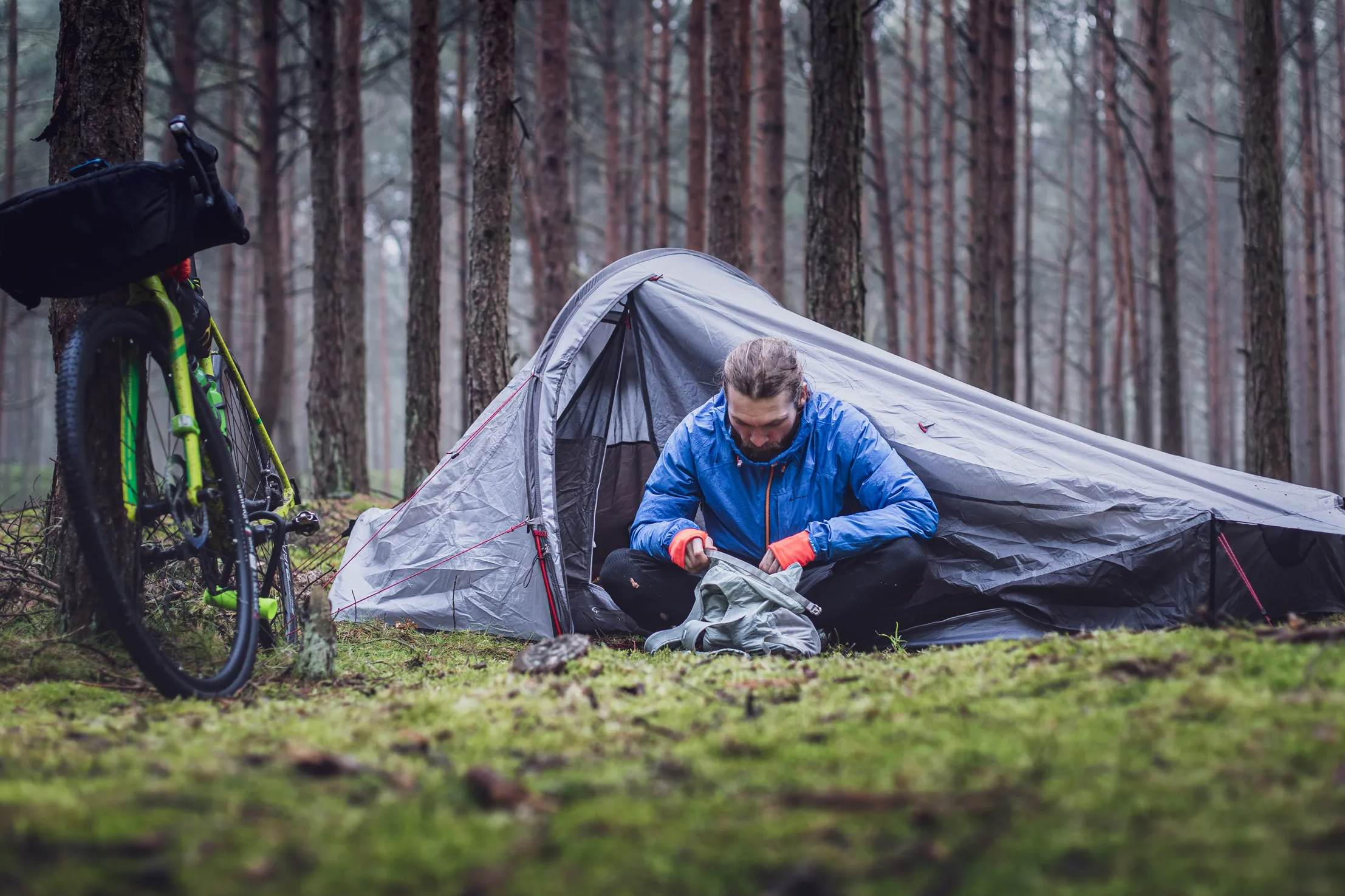
First-Time Camper Must Haves: Essential Equipment List
For the first-time camper, it is often difficult to know what to pack. If you have a buying guide all your problems will be solved, in this article, we will recommend a list of first-time Camper Must Haves. Worry-free journey when you have the right gear.
Tent
It is the most important camper must-have! Choosing the most suitable tent for camping in the wild can also be a comfortable enjoyment. There are many brands and styles of tents on the market, from the type, and size to the choice of fabric are all very important factors, you must do your homework before buying!
Camping Canopy
When camping, cooking, eating, and chatting will usually set up another space to use, in winter, rest area tents and activity area canopy is a common combination, but because of the hot weather in summer, the canopy can make air convection more ventilated and comfortable, so there are a lot of campers will also choose the tent plus the canopy, but pay special attention to the fact that most of the canopy does not have tent poles and pegs, so you need to prepare another tent poles and pegs, so you need to prepare another tent poles and pegs. However, it is important to note that most canopy tents do not have poles and pegs, so you need to prepare poles and pegs to fix and adjust the height. In addition, some large tents are designed as one-room tents, which is also a good choice for novice campers!
Sleeping bag or sleeping pad
Sleeping bags are available in “natural down”, “chemical fiber” and “fleece” categories, generally speaking, we recommend choosing a down sleeping bag, because the benefits of down are very warm and lightweight, and it does not take up much space when you store it. The benefits of down are that it is hot and lightweight, and it takes up less space to store. If you are going to a campground at a lower altitude with a higher temperature, you can also choose to bring a thin blanket as a quilt. Sleeping pads are also part of the soul of camping! In addition to insulating the floor from cold and moisture, a good sleeping pad will make you more comfortable and allow you to sleep through the night outdoors.
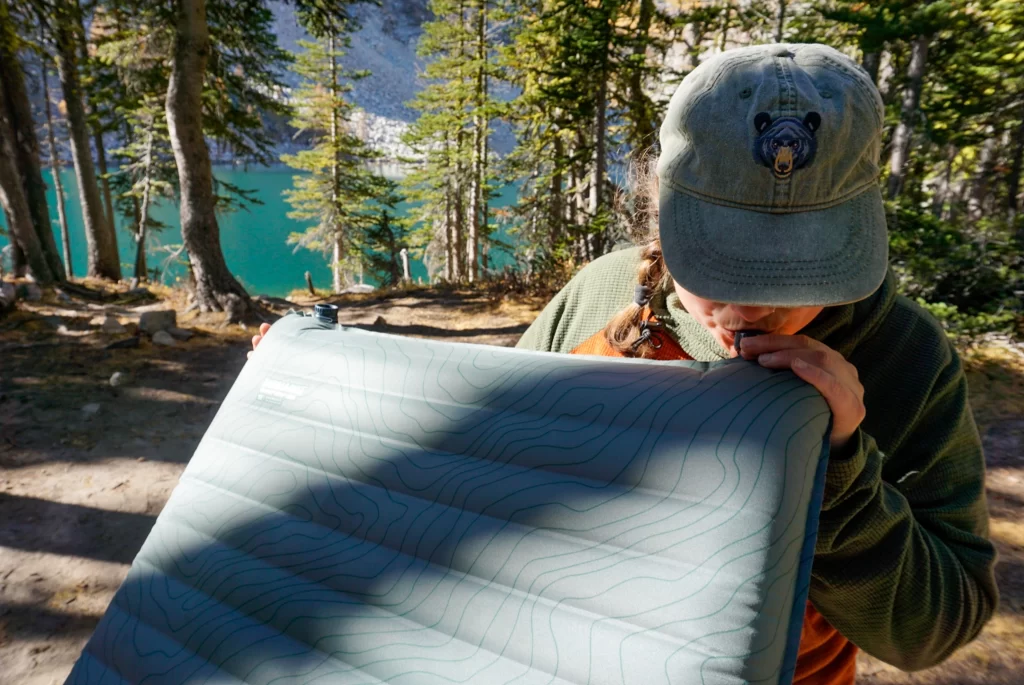
Picnic mat
Picnic mats can be used in addition to daily picnics, but also for the tent space mats, which usually have a lot of styles and colors, in the camping style layout also one of the very important camper must-haves.
Camping Trolley
Camping trolleys can be used as storage and transportation equipment, put on the ground easily to moisture, or dirty things can be put on the trolley, which can keep them dry and clean. The equipment pushed to go convenient and labor-saving, good pull, push, and not stuck is the first condition to buy this camping equipment.
Camping light or horse lamp
Outdoor camping, the night arrives on the need for lighting, this time the choice of camping lamps and lanterns is very important, the choice of camping lamps and lanterns is nothing more than the lumens (brightness), ease of use, use, and so on. In this era of camping aesthetics, a camping light bar is a good choice to create atmosphere and brightness. Then there are ground lights, which are not essential, but they are a great guardian of nighttime safety in the camping area and a thoughtful camping accessory that prevents tripping over camping ropes at night.
Outdoor Folding Table and Chairs
Outdoor folding tables and chairs are very necessary, you can sit around with your friends to share food, warm up, or do some entertainment activities, which can provide you with a more comfortable camping experience.
Outdoor Cookware and Utensils
Traditional camping cookware can use cassette stoves, which are more powerful and can cook food outdoors, but the disadvantage is that the use of open flames may lead to fire, which is a safety hazard. You can use electrical cookware, which is safer and more environmentally friendly.
Solar Refrigerator
Solar refrigerators can keep food fresh, even if you stay outdoors for a few days, you don’t have to worry about food spoilage or corruption, and solar refrigerators can use solar power, more convenient.
Portable Solar Chargers
Portable solar chargers are must-have camping equipment that convert sunlight into electricity to charge the portable power station continuously. The power storage can be used to run electrical devices directly or to charge electronic devices such as cell phones, cameras, fans, and computers. At night, it can light up the campground.
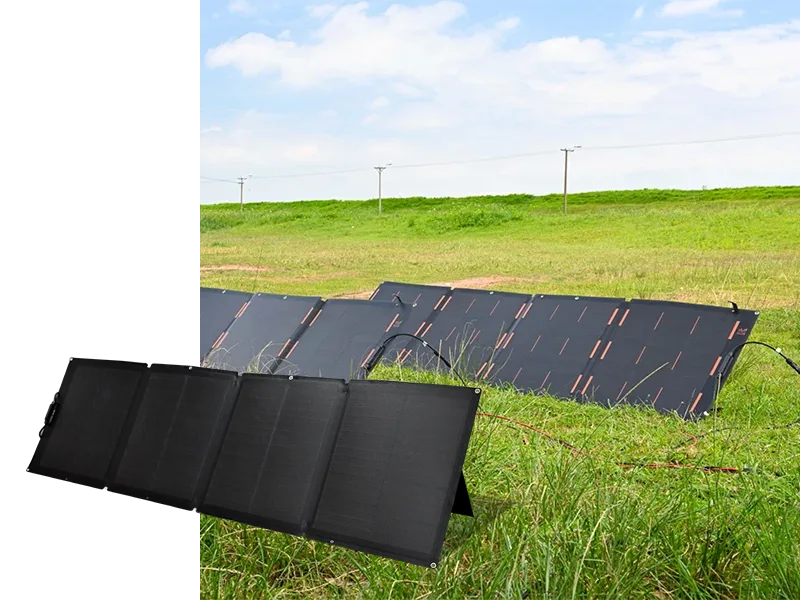
10 Best Off Grid Camping Destinations
In addition to some of the best states for off-grid living, National parks still dominate the most popular destinations for off-grid camping, and we’ve listed 10 of the most popular national parks for off-grid camper to enjoy a variety of picnics, hiking, fishing, swimming, and many more activities in the vast wilderness while enjoying the beautiful natural landscapes.
Because of the unique charm and popularity of these national parks, campgrounds in many of the parks are often hard to come by during peak tourist seasons. Therefore, if you have your heart set on a specific camping spot, planning and making reservations is important. Fortunately, you can inquire about reservations on the National Park Official Website. When planning your off-grid camping trip, be sure to check each park’s up-to-date opening status and reservation requirements ahead of time to ensure your trip goes smoothly.
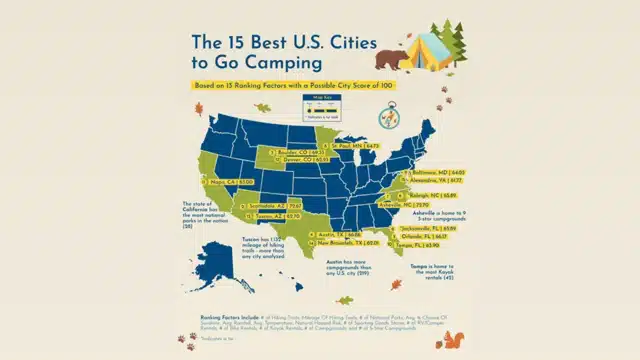
Joshua Tree National Park, CA
Located in Southern California, is known for its unique Joshua trees and the vast Mojave Desert. The camping sites here offer a prime location for stargazing during summer nights, providing an intimate experience with nature.
Yosemite National Park, CA
With 95% untouched wilderness, it’s an ideal spot for exploring North America’s giant sequoias and high mountain lakes. Unique cliffs and spectacular natural views draw visitors from around the globe.
Sequoia and Kings Canyon National Parks, CA
These neighboring parks are famous for their massive sequoias and deep canyons. Campers can experience the largest sequoia groves in North America and California’s primal landscapes.
Arches National Park, UT
Known for its unique natural arches and red rock landscapes in Utah. The camping sites here offer opportunities to explore natural wonders and enjoy the night sky filled with stars.
Capitol Reef National Park, UT
As an IDSP-designated “Gold Tier” International Dark Sky Park, Capitol Reef offers an unparalleled opportunity to observe unpolluted starry skies. Its spectacular geology and diverse ecosystems make it a haven for adventurers.
Petrified Forest National Park, AZ
Famous for its unique petrified woodlands and being officially designated as an International Dark Sky Park by the International Dark-Sky Association, it provides an excellent spot for nighttime observations.
Zion National Park, UT
Renowned for its spectacular sandstone canyons and rich biodiversity. Campers can experience adventure in the canyons and camping under a star-filled sky.
Grand Canyon National Park, AZ
Famous for its majestic canyon views, the Grand Canyon offers various camping experiences, from the accessible South Rim to the more secluded and tranquil North Rim.
Yellowstone National Park, WY
The world’s first national park is known for its geothermal wonders, stunning natural landscapes, and diverse wildlife. Campers can experience true wilderness living here.
Crater Lake National Park, OR
Home to the deepest lake in the USA, Crater Lake National Park offers a unique camping experience where campers can enjoy the tranquil natural environment and clear lake waters.
How to Find Free Camping
Research is Key. You can get more information about off-grid campgrounds on the website and app below, which can be searched based on your preferred destination.
Public Lands: The United States is blessed with lots of public lands, many of which allow free camping. These include:
- Bureau of Land Management (BLM) Areas: Predominantly found in the West, BLM lands offer up to 14 days of camping. They often provide remote spots with stunning natural beauty.
- National Forests and Grasslands: These areas permit dispersed camping outside of established campgrounds. The allowed duration of stay can range from 7 to 21 days, depending on the specific regulations of each forest.
Always check in with local rangers or online for the latest guidelines before setting up camp.

Helpful Links:
- Bureau of Land Management
- National Forests and Grasslands
- Fish and Wildlife Services
- US Public Lands App
Apps and Websites
FreeCampsites.net: A resourceful website where you input your location to see a map dotted with free camping spots. A reliable internet connection is necessary for this service.
Boondocking Apps: Download camping software from the APP Store, finding off-grid spots will be easier:
iOverlander: This app is celebrated for its user-friendliness, showcasing a range of campsites from free dispersed ones to paid campgrounds, all categorized by color coding. It’s enriched with resources such as water refilling stations and RV dump sites.
Campendium and Park4night: Other helpful apps that, although not my go-to’s, come highly recommended by the nomadic community, especially in Europe for Park4night.
More Useful Tips for Your Off-Grid Trips
Some of the Apps to use for your hiking and camping trip will hopefully make your journey easier and funnier!
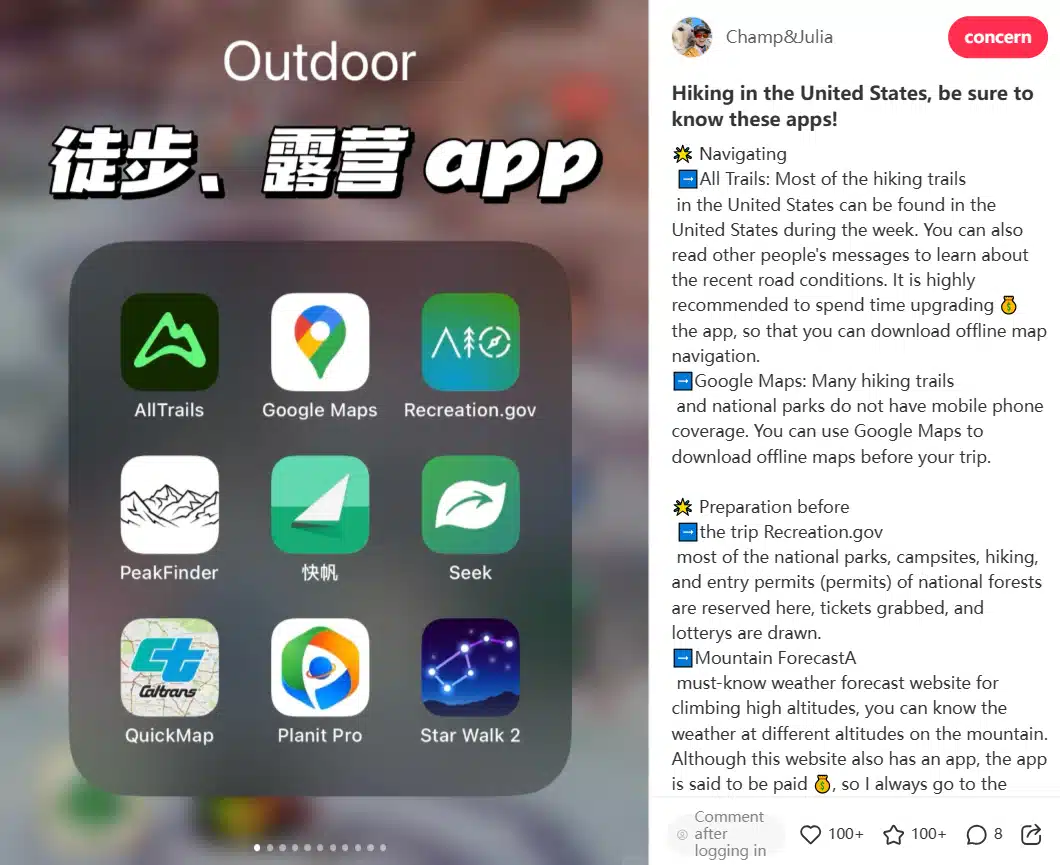
All Trails: Almost every hiking trail within a week’s distance in the United States can be found on this app. You can also read comments from others to understand recent trial conditions. Paying for the app upgrade is highly recommended so you can download offline maps for navigation.
Google Maps: Many hiking trails and national parks lack cell signals. Use Google Maps to download offline maps before your trip.
Recreation.gov: Most camping sites, hiking trails, and entry permits for national parks and forests can be reserved, ticketed, or entered into a lottery here.
Mountain Forecast: This is an essential weather forecast website for climbing high-altitude mountains, providing weather information at different elevations. Although there is an app, it reportedly requires payment, so I always check the weather forecast on the website in advance.
Peak Finder: Open the app’s camera, and it automatically identifies the names and heights of mountains, allowing you to generate images.
Seek: Open the app’s camera, and it can automatically identify the names of plants.
Quick Map: A must-have for checking road conditions in California during winter, informing you whether roads are closed and if snow chains are needed.
Planit Pro: An app essential for astrophotography, predicting the position of the galactic center and the moon at any time and location.
Star Walk 2: Open the app’s camera, point it at the sky, and it can predict the positions of stars, helping you find the constellations you want to see.
For more off-grid information:
Affordable RV Parks Under $500 a Month in Florida- 2024 Guide | Best State To Live Off Grid 2024 | Explore the Great Outdoors: 5 Best RV Parks in Virginia for 2024 | Off Grid Camping 101: Everything You Need to Know | Explore Long Term RV Parks near me in North America | 5 Best Places to Camp in Southern California:2024 Guide | 7 Best Camping Places in Bay Area 2024











